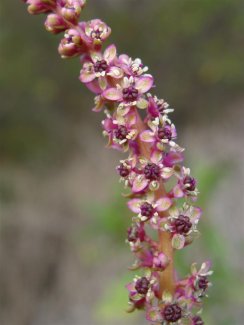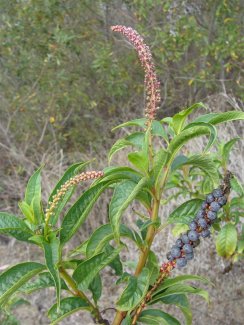Eastern US and Canada. GRIN lists it as native in California but the Jepson Flora lists it as naturalized.
A herbaceous perennial plant in the pokeweed family Phytolaccaceae growing up to 8 feet in height. It is native to the eastern United States and has significant toxicity.
It has simple leaves on green to red or purplish stems and a large white taproot. The flowers are green to white, followed by purple to almost black berries which are a food source for songbirds such as gray catbird, northern mockingbird, northern cardinal, and brown thrasher, as well as other birds and some small animals (i.e., to species that are unaffected by its mammalian toxins) (Wikipedia).
Used as an ornamental (mostly for attractive berries). Many other uses -- biomedical, homeopathic remedies, food for birds and other animals.

